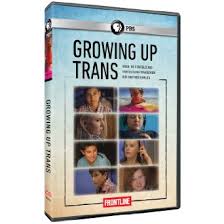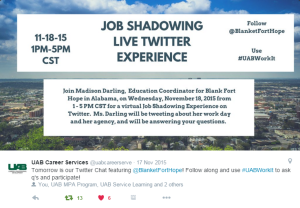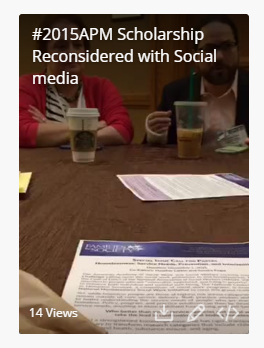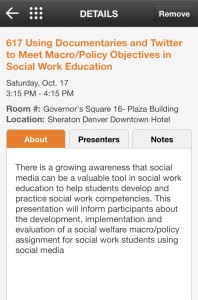#MacroSW Documentary Movie Night 1/28/16 – Growing up Trans
 Good news for those of you interested in the live #MacroSW chats! We are now chatting every Thursday night at 8:00 PM CST/ 9:00 PM EST. Next week, on January 28th, I will be hosting our first our first Documentary Movie Night. We will be watching Growing Up Trans produced by the PBS’s Frontline. Here is the description of the movie from Frontline:
Good news for those of you interested in the live #MacroSW chats! We are now chatting every Thursday night at 8:00 PM CST/ 9:00 PM EST. Next week, on January 28th, I will be hosting our first our first Documentary Movie Night. We will be watching Growing Up Trans produced by the PBS’s Frontline. Here is the description of the movie from Frontline:
Just a generation ago, it was adults, not kids, who changed genders. But today, many children are transitioning, too — with new medical options, and at younger and younger ages. In Growing Up Trans, FRONTLINE takes viewers on an intimate and eye-opening journey inside the struggles and choices facing transgender kids and their families.
Here is a link the trailer and the movie (1 hour and 24 minutes): http://www.pbs.org/wgbh/frontline/film/growing-up-trans/. You can watch the movie for free.
This movie shows what it is like for children in the US to transition genders from the individual and family perspectives. As you watch the movie, put on your #MacroSW hat and think about some of the policy, research and other macro-level issues that surround the individuals and families in this movie.
Here are the questions we hope to discuss during the chat:
-From the movie, what are some of the challenges for transgender kids and their parents?
-What are some macro-level approaches to addressing these challenges?
-What do you think is the most important policy issue affecting transgender children? Why?
-What do you think most Americans don’t realize about children who are transgender?
-What single word best describes how the film made you feel?
-What’s next? How do we as social workers address the challenges experienced by transgender children?
Also, please follow our new Twitter handle – @OfficialMacroSW.
About #MacroSW:
#MacroSW is a collaboration of social workers, organizations, social work schools, and individuals working to promote macro social work practice. Macro social work practice focuses on changing larger systems, such as communities and organizations. It encompasses a broad spectrum of actions and ideas, ranging from community organizing and education to legislative advocacy and policy analysis. The chats are held weekly on Twitter every Thursday at 9 p.m. EST (6 p.m. PST). Click here for a list of chat partners. For information about how to participate in the #MacroSW chat, view our FAQs. For chat schedule and chat archives check out: http://macrosw.com
How to cite this post:
Hitchcock, L. I. (2016, January 22).#MacroSW Documentary Movie Night 1/28/16 – Growing up Trans[Blog Post]. Retrieved from https://laureliversonhitchcock.org/2016/01/22/macrosw-documentary-movie-night-12816-growing-up-trans/.
Job Shadowing on Twitter
 I’m always looking for a new way to incorporate Twitter into my social work courses. So I was pleased when my colleague Joy Jones with UAB’s Career and Professional Services suggested a new idea to me – a virtual job shadowing experience on Twitter. The event goes like this – a professional agrees to tweet about her job during a set date and time, students can follow along via Twitter, and then tweet back questions or comments to the professional. Similar to a live twitter chat, students can use a computer, tablet or mobile device from anywhere, offering flexibility and the opportunity to engage with others who are also following the job shadowing. Joy had all the details worked out for an event including the job shadowing candidate, logistics, and a hashtag. All I had to do was recruit the students. I offered it as an extra credit opportunity for students in my two classes last semester.
I’m always looking for a new way to incorporate Twitter into my social work courses. So I was pleased when my colleague Joy Jones with UAB’s Career and Professional Services suggested a new idea to me – a virtual job shadowing experience on Twitter. The event goes like this – a professional agrees to tweet about her job during a set date and time, students can follow along via Twitter, and then tweet back questions or comments to the professional. Similar to a live twitter chat, students can use a computer, tablet or mobile device from anywhere, offering flexibility and the opportunity to engage with others who are also following the job shadowing. Joy had all the details worked out for an event including the job shadowing candidate, logistics, and a hashtag. All I had to do was recruit the students. I offered it as an extra credit opportunity for students in my two classes last semester.
The event happened on 11/18/15 from 1 – 5 pm with Madison Darling from Blanket Fort Hope, a local non-profit agency in Alabama fighting child human trafficking. Madison agreed to tweet every 30 minutes about what she was doing that day and answer questions from students as frequently as possible. We had about fifteen participants total, along with myself and Joy. Questions ranged from “what is like working with children” to “how do I volunteer with your agency.” Madison and one of her colleagues did a great job answering questions and sharing about their agency and their job duties. Not only were my students able to network with professionals, a connection was created between my academic department, our campus career services and a community partner. Click here for a link to the transcript from the event, where you can read the tweets.
Joy and I will working on more of job shadowing events in the coming semester, and here are some suggestions I have for other social work faculty interested in hosting a similar event and/or incorporating this type of job shadowing into a learning activity:
Social Work Scholarship in the Age of Social Media
 It has been almost two months since the Council on Social Work Education’s Annual Program Meeting in Denver this past October (#APM2015), and I have been thinking a lot about one of the round table discussions I attended. The topic was “Blogs, Podcasts, and Tweets: Reconsidering Scholarship in the Age of Social Media” and the conversation was led by Jonathan Singer of the School of Social Work at Loyola University and Nancy J. Smyth of School of Social Work at the University at Buffalo. Its purpose was to engage participants in a dialogue about the ways social media are changing how social work educators and scholars think about, produce, disseminate and measure the outcomes of scholarship in social work. I recorded the discussion with Periscope, a video recording app for Twitter, and you can watch the video here. Be warned – the discussion started at 7:30 AM, requiring me to juggle my mobile phone with a large cappuccino.
It has been almost two months since the Council on Social Work Education’s Annual Program Meeting in Denver this past October (#APM2015), and I have been thinking a lot about one of the round table discussions I attended. The topic was “Blogs, Podcasts, and Tweets: Reconsidering Scholarship in the Age of Social Media” and the conversation was led by Jonathan Singer of the School of Social Work at Loyola University and Nancy J. Smyth of School of Social Work at the University at Buffalo. Its purpose was to engage participants in a dialogue about the ways social media are changing how social work educators and scholars think about, produce, disseminate and measure the outcomes of scholarship in social work. I recorded the discussion with Periscope, a video recording app for Twitter, and you can watch the video here. Be warned – the discussion started at 7:30 AM, requiring me to juggle my mobile phone with a large cappuccino.
There were about twenty other people present, representing all areas of social work academia (tenured and nontenured; administrators, researchers and teachers; large research institutions to small liberal arts colleges). Here are just some of the questions or concerns mentioned during this discussion:
– How can digital content (blog posts, tweets, podcasts) be incorporated into the tenure and promotion process?
– What is the best way to share ideas about scholarship via social media? Will it get scooped?
– How do we ensure a level of quality with social work scholarship that is published via social media?
I am not sure any of us walked away from the discussion with the answers to all our questions, but I believe the consensus was that social and digital media are powerful tools for sharing and discussing social work scholarship. To be clear, I’m not arguing that social and digital media will replace the traditional forms of social work scholarship such as journals, books and conference presentations. I know that writing this blog will not get me tenure, but it does provide me with different ways to connect with other scholars, share ideas and write about topics that don’t fit into traditional publication avenues. Social media provide vital and rich ways to share, curate and discuss practice and research in social work. I am convinced that today’s social work faculty need to become savvy enough to share and discuss social work scholarship in digital environments. Here are my three reasons for using social media as part of my scholarship:
#APM2015 Using Documentaries and Twitter to Meet Macro/Policy Objectives in Social Work Education

 Today, Dr. Jimmy Young and I are presenting at the 61st Annual Program Meeting of the Council on Social Work Education about our social media assignment using a documentary movie and Twitter. There is a growing awareness that social media can be a valuable tool in social work education to help students develop and practice social work competencies. This presentation will inform participants about the development, implementation and evaluation of a social welfare macro/policy assignment for social work students using social media. In our session, we will The learning objectives for this session include:
Today, Dr. Jimmy Young and I are presenting at the 61st Annual Program Meeting of the Council on Social Work Education about our social media assignment using a documentary movie and Twitter. There is a growing awareness that social media can be a valuable tool in social work education to help students develop and practice social work competencies. This presentation will inform participants about the development, implementation and evaluation of a social welfare macro/policy assignment for social work students using social media. In our session, we will The learning objectives for this session include:
1. Understand how the social media platform Twitter can be incorporated into assignments for social work policy and macro courses.
2. Demonstrate how social work educators can assess attainment of competency among social work students using a social media assignment paired with a Rubric for evaluation of the assignment’s learning outcomes.
3. Appreciate the role of professional collaboration in the development, implementation and evaluation of social media-based assignments.
Here is a link to the Prezi that we will show during the presentation.
Fall 2015 Live Twitter Chat Assignment for Social Work Students
 To help social work students and educators learn about Twitter and develop the skills to participate in a live chat, Jimmy Young of the California State University San Marcos and I (Laurel Hitchcock of University of Alabama at Birmingham) have designed an assignment for social work students that involves joining a live Twitter chat with other social work students, educators and practitioners from around the country to talk about important social and economic justice issues. The assignment is designed for a policy or macro-practice course, but it can be incorporated into almost any social work course. Here are the some of the details of the assignment:
To help social work students and educators learn about Twitter and develop the skills to participate in a live chat, Jimmy Young of the California State University San Marcos and I (Laurel Hitchcock of University of Alabama at Birmingham) have designed an assignment for social work students that involves joining a live Twitter chat with other social work students, educators and practitioners from around the country to talk about important social and economic justice issues. The assignment is designed for a policy or macro-practice course, but it can be incorporated into almost any social work course. Here are the some of the details of the assignment:
1. Students watch the documentary Inequality for All, and then write a brief reaction paper to movie.
2. Then, students participate in the live Twitter chat scheduled for October 8, 2015 at 8:00 PM CST/6:00 PM PST. This chat will be sponsored by #MacroSW, a bi-weekly Twitter chat focusing on macro social work practice issues, and hosted by myself & Jimmy. During the chat, we will ask questions about the film and income inequality that will guide the flow of the conversation.
3. After the live chat, students write a brief self-reflection essay about the experience of participating in the chat.
While the written parts of the assignment are optional to participate in the chat, we highly recommend some type of reflection so students are engaged with the content from the documentary prior to the chat, and have an opportunity to critically assess how the experience can inform their future social work practice. We have written in more detail about the assignment in previous blog posts which include detailed instructions for the assignment, grading rubrics and tips on how to introduce your students to Twitter. Our first chat was held on October 28, 2014, and you can read details about it here, including a transcript of tweets from the conversation. There is no cost to educators or students to participate in the chat, and we welcome anyone, especially social work practitioners, to join the chat.
Because we are working to improve the chat and the assignment as an educational experience for social work students, we are very interested in any feedback from social work educators. Please contact us (by clicking on our names below) if you plan to have your class or maybe a student group participate in the chat. We also welcome questions.
How to cite this post:
Hitchcock, L. I. (2015, October 2).Fall 2015 Live Twitter Chat Assignment for Social Work Students[Blog Post]. Retrieved from https://laureliversonhitchcock.org/2015/10/02/fall-2015-live-twitter-chat-assignment-for-social-work-students/.


